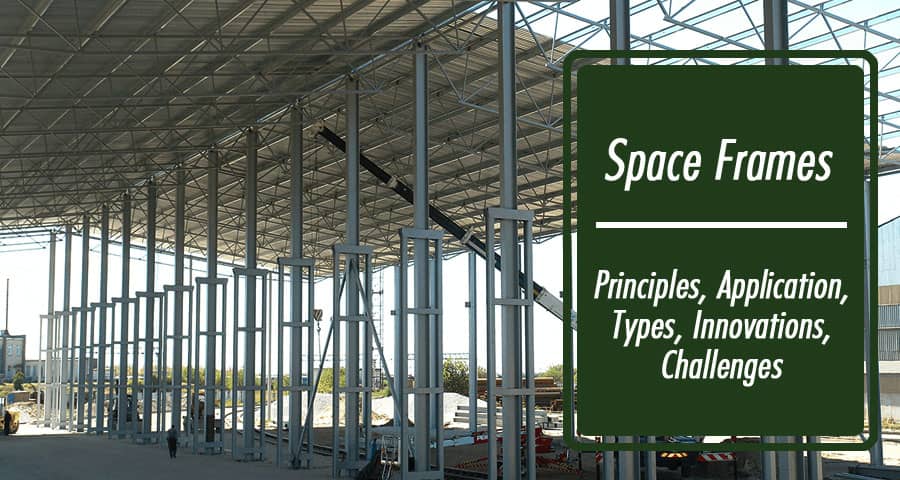Exploring Space Frames

Space frames, an architectural and engineering marvel, stand as a testament to human innovation and creativity in structural design. These intricate frameworks, characterized by their lightweight and geometrically fascinating structures, have captivated the imagination of professionals and enthusiasts alike.
Introduction to Space Frames
What are space frames?
Space frames are three-dimensional structures composed of linear elements interconnected to form a grid or a web-like pattern. They distribute loads efficiently across the framework, utilizing the inherent strength of geometric shapes.
Historical background
The concept of space frames dates back centuries, with historical examples found in ancient architecture across civilizations. However, their modern development and application emerged in the 20th century, with notable advancements by architects and engineers.
Design Principles of Space Frames
Structural elements: Space frames primarily consist of nodes and struts arranged to create a stable and robust structure. These elements, often made of steel, aluminum, or composite materials, enable the framework to bear heavy loads while remaining lightweight.
Advantages of space frames: The design flexibility, high strength-to-weight ratio, and ability to span large areas make space frames an attractive choice in various industries, from construction to aerospace.
Applications of Space Frames
Architecture: In architecture, space frames enable the creation of iconic structures like domes, atriums, and stadiums. Their ability to cover vast spaces without internal supports allows for stunning and functional designs.
Engineering: The engineering sector harnesses space frames in bridges, canopies, and even spacecraft due to their structural efficiency and adaptability to diverse environments.
Types of Space Frames
Classification based on geometry: Space frames come in various geometric configurations, including pyramidal, tetrahedral, and octahedral designs, each offering unique structural properties and aesthetic appeal.
Materials used in construction: The choice of materials, such as steel, aluminum, or advanced composites, influences the performance and durability of space frames, allowing for tailored solutions in different projects.
Innovations in Space Frame Technology
Modern advancements: Recent technological progress has seen the integration of advanced computational tools and manufacturing techniques, enhancing the precision and complexity of space frame designs.
Future possibilities: The convergence of materials science, robotics, and 3D printing holds immense promise in pushing the boundaries of space frame innovation, paving the way for unprecedented structural achievements.
Challenges and Limitations
Structural concerns: While space frames offer numerous benefits, challenges related to structural stability and maintenance persist, requiring continuous advancements in design and analysis methodologies.
Cost implications: The initial investment and specialized construction methods associated with space frames can pose financial challenges, influencing their widespread adoption in certain projects.
Environmental Impact and Sustainability
Eco-friendly aspects: Space frames, with their lightweight construction and potential for using sustainable materials, align with eco-conscious design practices, contributing to a greener built environment.
Recycling and reusability: Efforts towards recyclability and reusability of materials in space frames contribute to reducing environmental impact and enhancing sustainability in construction.
Safety Measures and Regulations
Standards and codes: Adherence to stringent safety standards and building codes is crucial in ensuring the structural integrity and safety of space frame installations.
Safety precautions: Implementation of safety protocols during design, construction, and maintenance phases is essential to mitigate potential risks associated with space frame structures.
Space Frames in Popular Culture
Influence in art and media: The visually striking nature of space frames has inspired artists and filmmakers, often featuring in futuristic settings and visually captivating creations.
Recognizable structures: Iconic buildings utilizing space frame technology have become landmarks, showcasing the versatility and architectural brilliance of these frameworks.
The Future of Space Frames
Potential developments: Continued research and innovation in materials, design methodologies, and construction techniques are poised to unlock new possibilities, further expanding the application and efficiency of space frames.
Integration in various fields: The integration of space frames into diverse industries, including architecture, infrastructure, and aerospace, is expected to redefine structural design paradigms, offering novel solutions to complex challenges.
In conclusion, the exploration of space frames unveils a realm where engineering ingenuity meets architectural elegance, presenting a canvas for innovative designs and sustainable solutions. As technology advances and challenges are addressed, space frames are poised to continue shaping the landscapes of our built environment.
FAQs
Are space frames only used in large-scale constructions?
Space frames are versatile and can be adapted for various scales, from small structures to massive architectural marvels.
How do space frames contribute to sustainability?
Through their lightweight design and potential use of recyclable materials, space frames align with eco-friendly construction practices.
What are the limitations of space frames in construction?
Challenges such as initial costs and structural complexities pose limitations, influencing their application in certain projects.
Are there any safety concerns associated with space frames?
Adherence to safety standards and proper maintenance are crucial to mitigate potential risks related to space frame structures.
How do space frames differ from traditional building structures?
Space frames utilize a network of interconnected elements to distribute loads efficiently without relying on internal supports, offering design flexibility and spanning larger areas.
